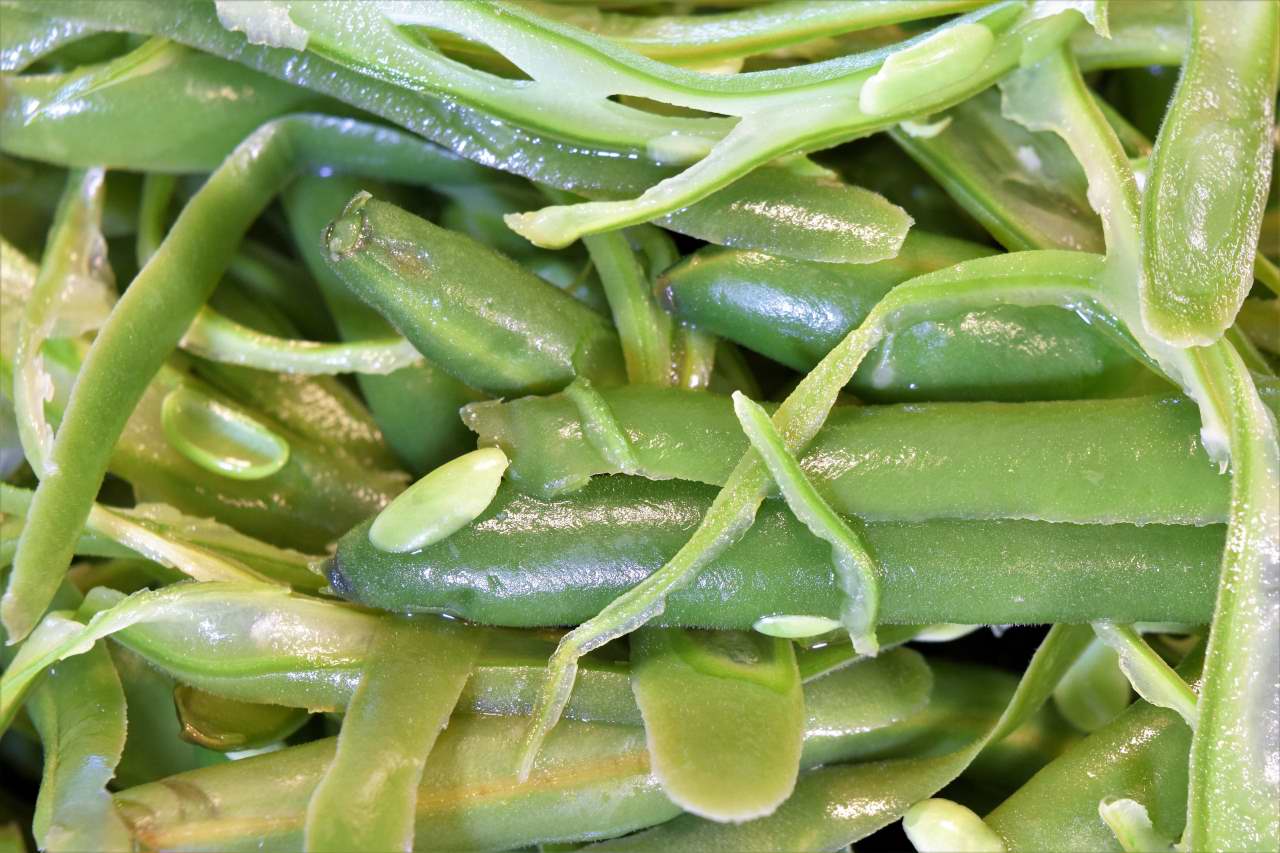Level of difficulty: 2.75
Procedure: Creating French Cut Green Beans
Use a vegetable/potato peeler to cut the beans into thin lengthwise slices. If you look at the slide, you will see that the peeler does not actually “start” at the very end of the bean. The first slice should start about 1/3 of the way down the measure.
This leaves you with a little handle to hold on to while you cut the next slice. In most cases, you will get 3-4 slices from each bean. Do not expect them to be precisely identical. Just try to get them as long as possible, and keep the peeler clean so the beans don’t “catch” on it.
I like to use what is called a “Swiss” peeler, they are not quite as common as some other types. Any peeler will work.Some work better for potatoes than for carrots and so on. Having a few also makes it slightly more difficult to lose them!
This seems like a time consuming task at first, but it really doesn’t take very long before you have a fairly large pile. You can just see the peeler on the left.
Make sure your tank is fully preheated to:
183F/84C.
Fill a Ziploc Gallon Freezer bag half way with water, and lower into the bath. Give the water in the bag 10 minutes to equalize with the temperature in the vessel. Hold the bag open with one hand and drop the beans in with the other. Do not attempt to remove the bag of hot water from the bath; this is quite dangerous. Just be patient and lower small amounts at a time until all the beans are in the bag. Use a fork or a pair of tongs to move the beans around a little bit, to make sure they are all wet. Process for 10 minutes.
The beans should be bright green with some crispness left. If you plan to serve immediately, you can give them another five minutes. People have many different preferences when it comes to the doneness of green beans, so, suit yourself.
After processing, I almost always shock cold to 70F/21C in icewater and then refrigerate at 40F/4C. Since the bag is not sealed, the method of removal must be adapted. You can actually use tongs to lift the beans out of the bag and drop them into cold/iced water. This is somewhat time consuming, but very safe.
You can also siphon or dip the hot water out of the tank and replace with cold water. Just disregard the presence of the Ziploc bag. This is also very safe.
I prefer to fill a medium Lipavi vessel with cold water, either in the sink itself or on the wash board, and carefully lower the entire bag with the beans into it. Give the water a few minutes to equalize, and then remove the bag. Pour the beans into a colander, and if they are still warm, cover them with cold water again and drain well before refrigerating.
Note: The beans will still emit the discoloring gasses after being shocked cold. Let the beans continue to “breathe” in packaging that is not air tight.
Applications:
Heating your sans vide processed beans can be done in many different ways. Dipping them in hot water and then tossing with a little garlic butter and some bacon is a tried and true model, one of the simplest and still one of the best.
The beans can also be baked en casserole, using the veloute or béchamel sauces described elsewhere on the site.
If you have time on your hands
Deep Fry Crust (optional)
Combine the flour with the sugar, salt, powdered dry milk, and baking powder. Cut the butter/shortening into the mixture using the paddle attachment on a mixer or a fork until it resembles coarse corn meal.
As a novel and somewhat more sinful variation, green beans are excellent deep fried. For this application I coat the beans in egg white and then toss in a liberal amount of the breading mix. Green beans have a smooth surface so they resist being coated. Toss again after a half an hour. Sometimes I re-toss them three or four times, just to get them coated and dry. Let them rest for several hours in an ample of amount of the breading mix outlined above.
Just before frying, I remove the beans from the container to a cookie sheet so the loose breading doesn’t find its way into the frying oil. The end result is ample reward for the somewhat painstaking procedure. Like I said, they are also great with bacon and a little butter!
Below we have the deep fried beans crowning smoked pastrami steaks with shaved sous vide compressed cantaloupe.
Norm King







